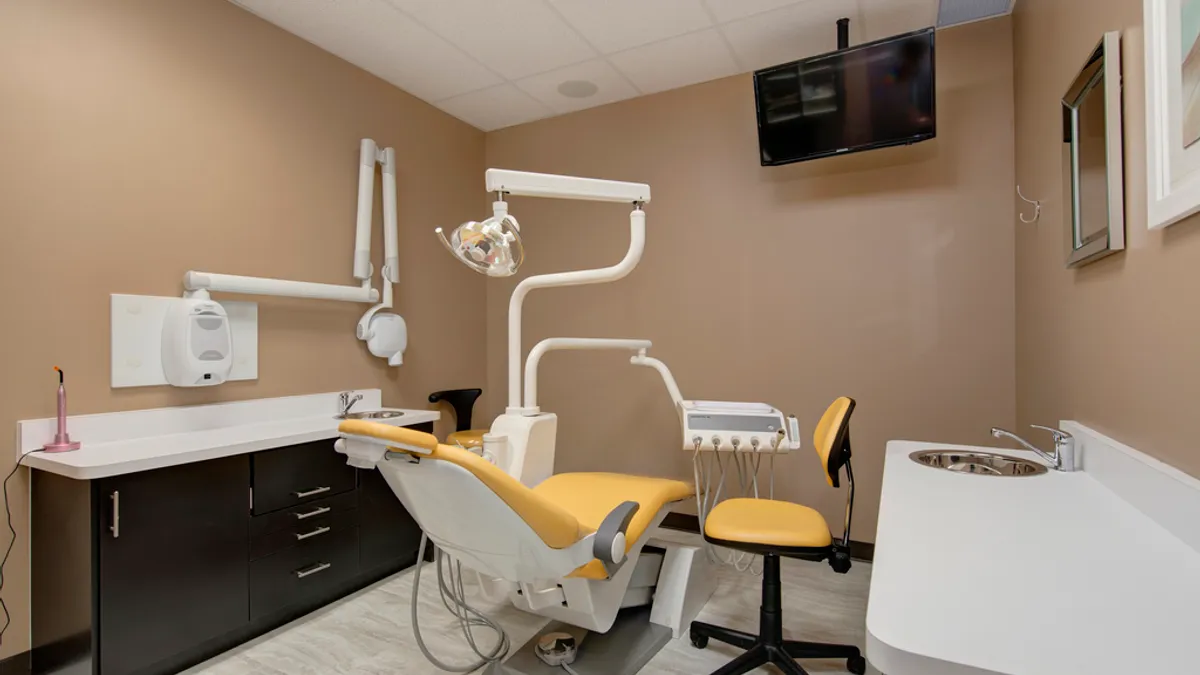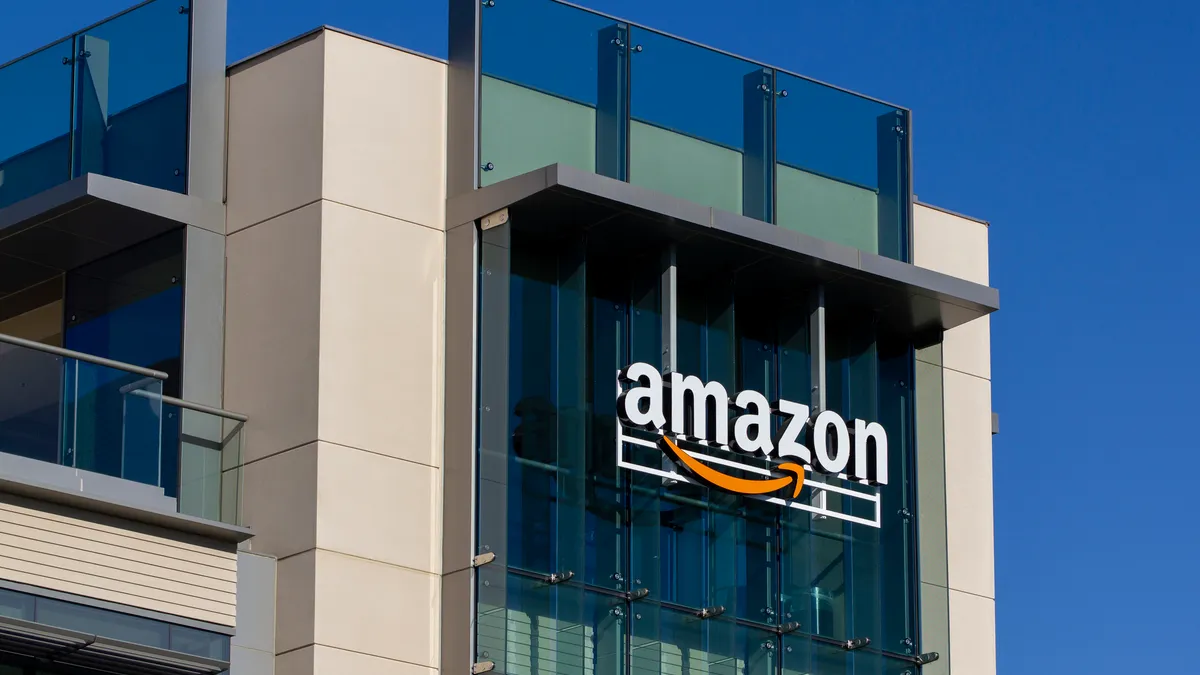Changing consumer expectations are forcing manufacturers to differentiate themselves with an increased emphasis on private label brands to remain competitive, and even companies that were financially healthy three years ago — like dental and veterinary conglomerate Patterson Companies — may struggle severely if they don't constantly innovate to meet consumer demands.
Patterson reported a 3.1% loss in net sales in its fourth quarter for fiscal year 2018 and a 2.3% decline YoY, which met "revised expectations" from management, continuing a steady downward trend that started several years ago according to financial data.
According to RapidRatings data, Patterson's current financial health rating (FHR) is at 52, which is medium-risk, but its core health is a lower 39. CEO James Gellert told Supply Chain Dive that in 2015, Patterson's FHR was an excellent 73 but by 2016 had dropped to 61 and by 2017 had dropped to 57.
To combat the decline, Patterson is implementing a number of supply chain strategies that have been and may continue to be bumpy. In addition to a new ERP initiative, CEO Mark Walchirk said the company will focus on "the customer experience" and its private label business to "drive more value with our strategic partners".
The private label initiative could rattle suppliers
"As we focus on the customer experience and improving sales execution to drive topline growth, we are equally focused on stabilizing our margins through our strategic sourcing initiatives and improving our product mix including our focus on private label," Walchirk told investors in a recent earnings call.
He also said Patterson has "established specific private label growth goals across both our businesses and we've aligned management and the sales team around increasing penetration of our existing portfolio," and that "we expect to grow our private label franchise at a faster rate than our overall consumables business."
By emphasizing private label brand growth, the company aims to widen its profit margins while increasing customer satisfaction. The initiative is similar to other manufacturers' strategies, but it could rattle Patterson's supply chain.
"(The company is) evaluating our vendor selection criteria and SKU portfolio with the goal of improving supply chain efficiency and ultimately driving greater profitability," Walchirk said. In turn, some suppliers may receive less business, and others may not fit Patterson's private label needs and lose a relationship with the company completely.
But still others may see an uptick in orders from Patterson as part of the private label focus.
"This is a good example of how a good strategic commercial initiative changes the nature of the company working with its suppliers in ways that are, on paper, good for its suppliers," Gellert said. "If they’re going to increase the spending with their private label suppliers, that’s good, but if they haven’t chosen the correct suppliers for their supply chains, they could be causing problems."
If the private label suppliers Patterson plans to use more heavily don't have the capacity to take on the extra work, they could become financially distressed, which could affect Patterson unfavorably. But on the surface, Gellert said, the move is a smart one that could help Patterson recoup its losses.
"It is positive that they have a private label line that they can diversify the product they put to market," he said. "They need to focus on profitability, which comes from higher margins, and the private label has higher margins."
A supply chain revamp may cause regression at first
While all these initiatives — especially so many at once — may substantially improve Patterson's supply chain and help the company improve sales in the long run, Walchirk acknowledged the new initiatives are causing some of the more recent sales declines.
"Our results for the quarter reflected the ongoing business challenges we faced throughout the fiscal year, including the impact of our sales force (sic) realignment and ERP implementation, the market transition to new technology offerings and our decision to broaden our portfolio over those offerings within the dental segment," he said in the earnings call.
The ERP upgrade is expected to help Patterson gain better visibility over its inventory and thus improve its inventory management techniques.
Over the next year, the company expects to recover from a rocky ERP implementation and ultimately see profit margins widen as a result, especially with the addition of a new online returns tool and an upcoming online bill payment platform.
"We are focused on how we can leverage our common platform to improve customer satisfaction; that includes brain-to-market system enhancements that will further improve the customer experience," Walchirk said.





















